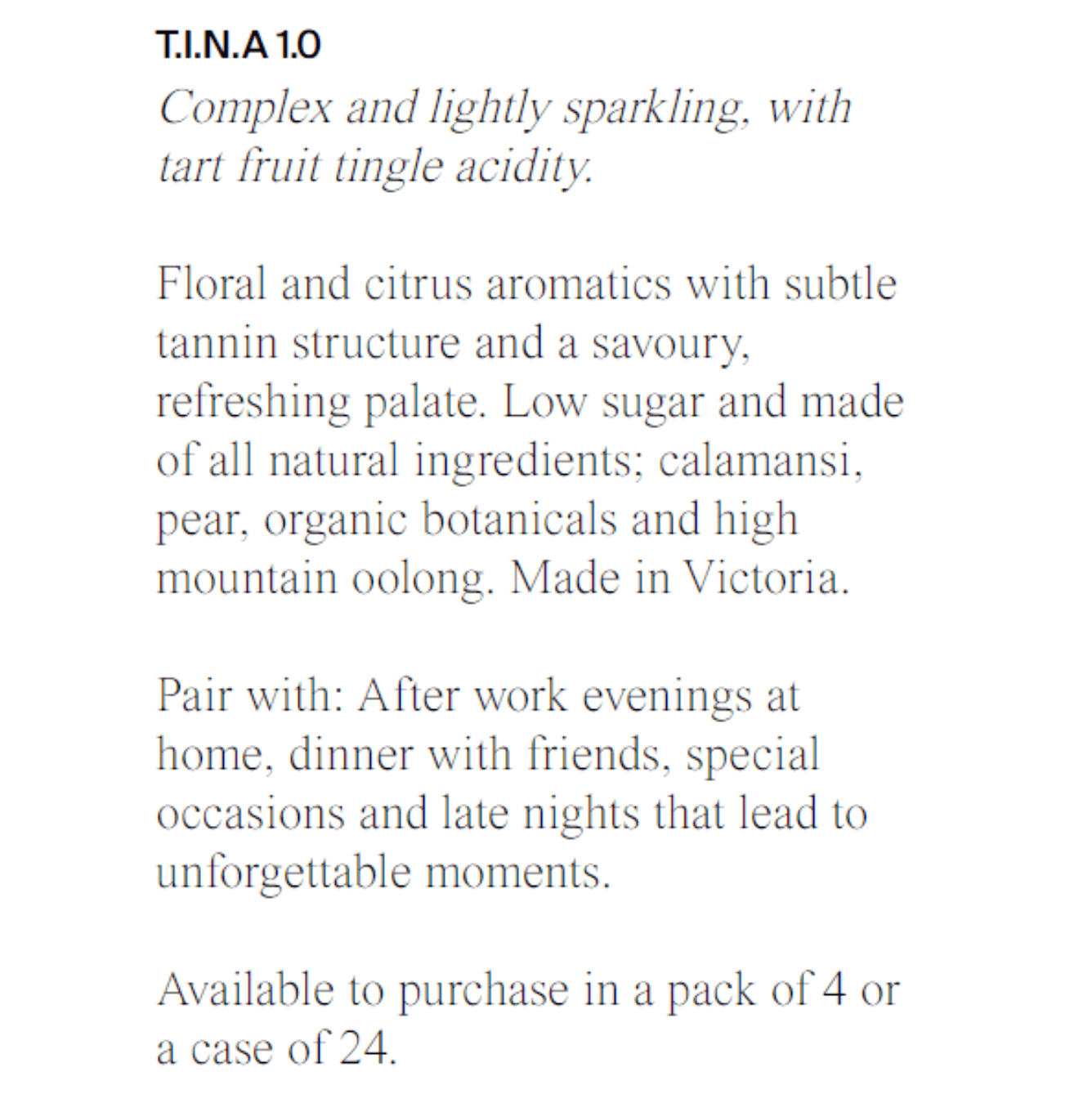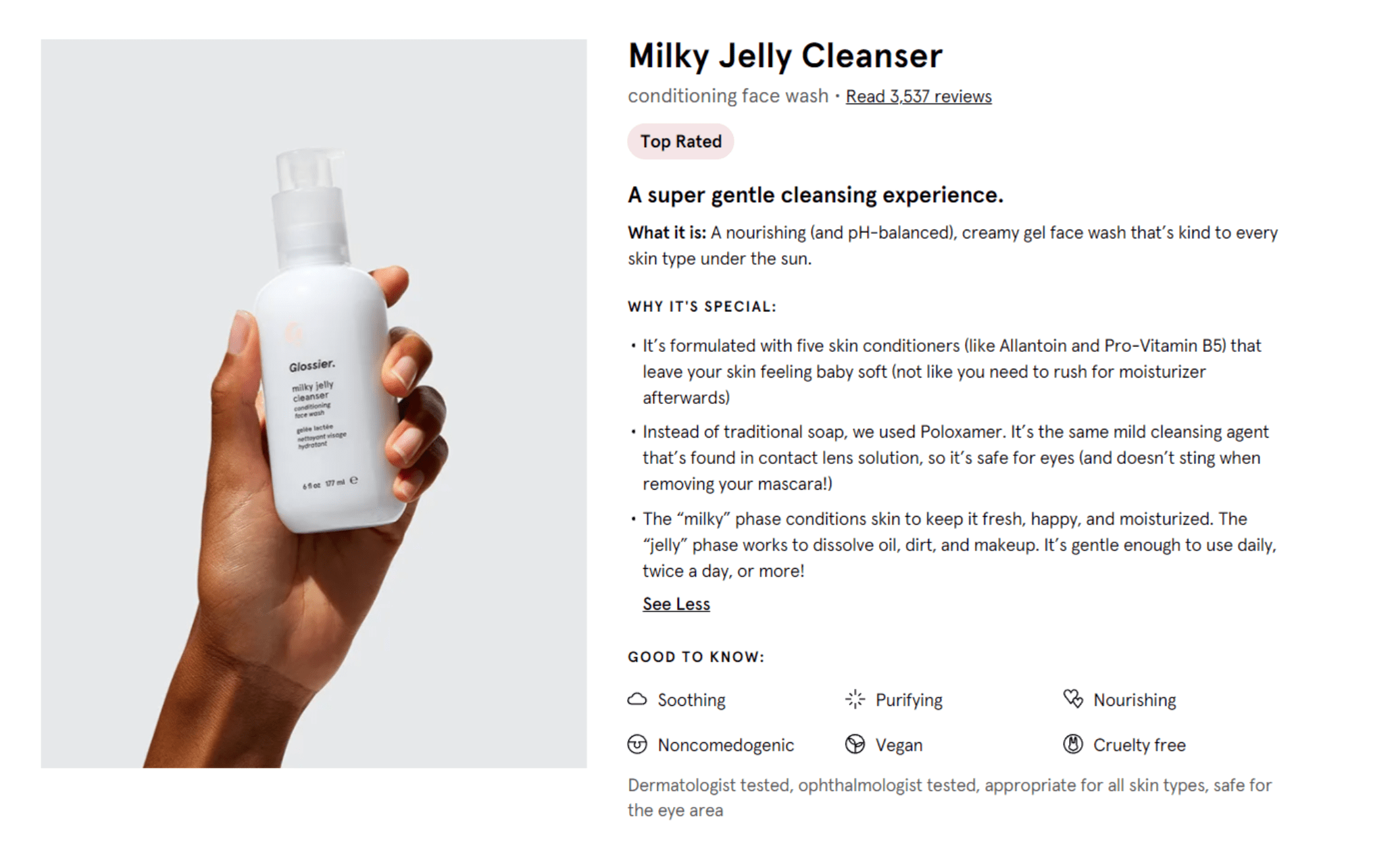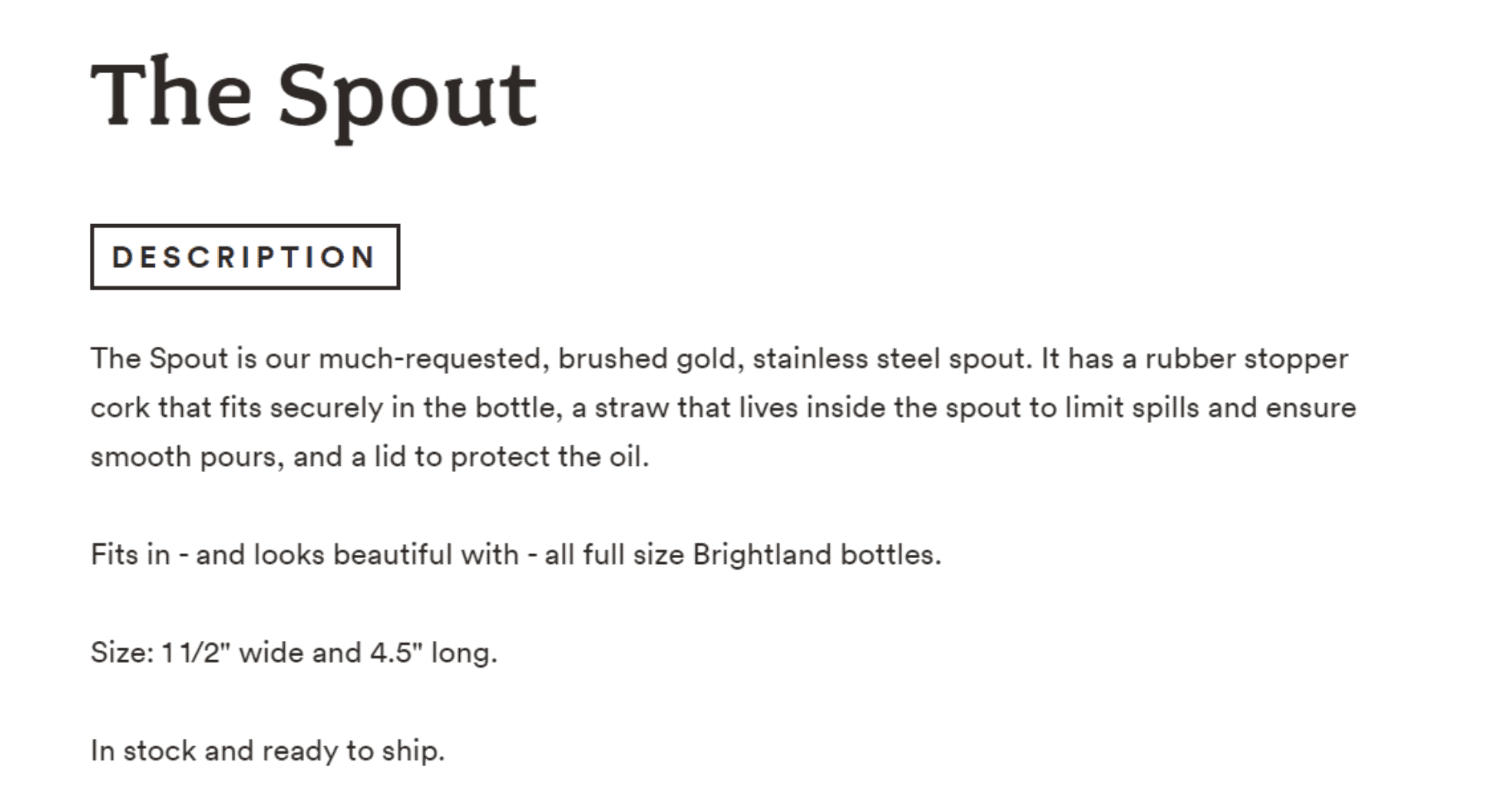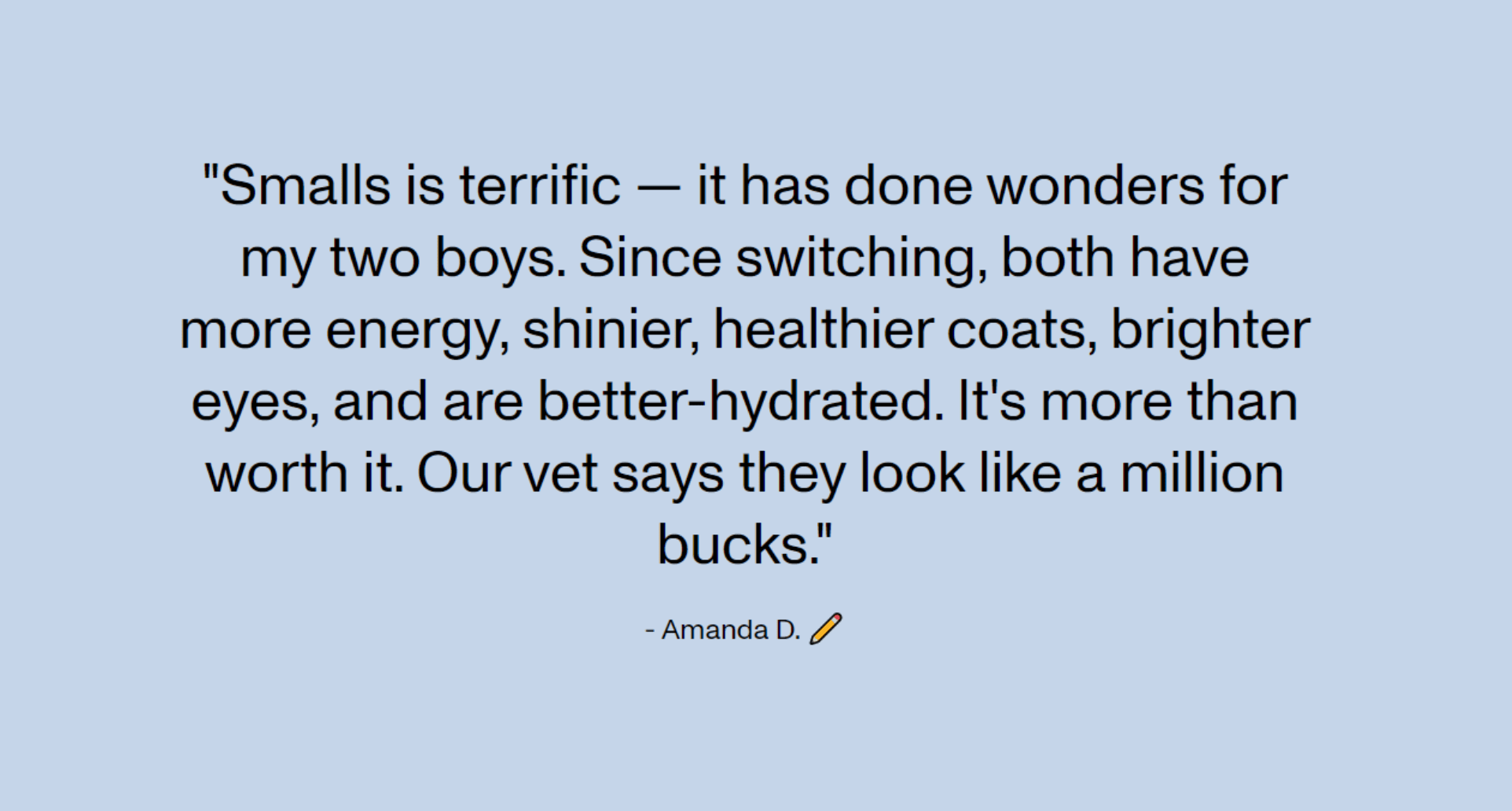If someone asked you to buy their product, your first response would be, “Well, what is it and what does it do?”—right? You gotta know more about what you’re buyin’ before you commit.

In the ecommerce world, product descriptions give you your answer. They explain all the essential details behind a product so customers can make an informed decision.
But, if you know what you’re doing, product descriptions can also become a powerful tool for turning interested onlookers into buyers. Let’s learn how these pages can convince and convert and how you can maximize that potential.
What’s the Deal with Product Descriptions?
In the right hands, product descriptions are waaay more than just text snippets telling you what you’re buying. They have a unique place in the digital shopping experience, providing the last push to checkout.
You see, customers come across product descriptions at the very end of the buyer’s journey and conversion funnel. These concepts cover the process a lead goes through as they become a customer.
In other words, most customers read (or re-read) the product description before they click the “Add to Cart” button. It’s one of the last opportunities you have to convince someone to buy. Now’s your chance to emphasize your product’s benefits and address any doubts visitors might have.
If your product description misses the mark, you could lose out on sales. But, if you nail this part of the shopping journey, you’ll give customers the last push they’ll need to buy.
How to Write a Product Description That Sells
Follow these five nuggets of advice to promote more sales with your product description:
1. Know your audience
Before you write a single word of your product description, know your target audience and the problems they’ve gotta solve. Your description should appeal to their interests and pain points so they know that you can give them the solution they need.
How do you get to know your audience? Perform in-depth audience research using methods like:
- Customer interviews/surveys: They don’t have to be super fancy—just make sure you talk to your customers frequently.
- Social media monitoring: Look at your social followers and your competitors’ followers to see what makes them tick.
- Competitive analysis: Research how your competitors position themselves in the market to see what similar customers dig.
- Google Analytics/site reports: Check your site analytics for trends in visitor location and demographics.
- Audience research tools: Tools like Spark Toro and Audiense offer information on different audience segments to inform your customer research.
Once you have a good grasp of your audience’s problems, you can present your product as the answer to those issues. You can also use adjectives related to their interests and values to describe your product.
This Is Not Alcohol (T.I.N.A.) sells non-alcoholic drinks to people who want the experience of alcohol without alcohol. Check out how T.I.N.A. appeals to this audience profile in the product description for the T.I.N.A. 1.0 drink:

This product description presents the drink as a solution for people interested in non-alcoholic spirits with a flavor profile and recommended pairing. Customers can look forward to a non-alcoholic drink without missing the unique descriptors associated with alcohol.
2. Match your AI-generated copy to your brand’s tone
AI-powered copy generators save you a lot of time on brainstorming. But you can’t rely on them to write product descriptions for you entirely. A successful product description matches its brand’s tone and priorities—both tasks meant for humans.
Instead of generating some text and calling it a day, think of your AI-generated copy as a starting point. Take the ideas you like and modify them to fit your brand.
Why? As discovered in the 2021 Conversion Benchmark Report, emotional language impacts copy’s ability to sell. For example, ecommerce customers were more likely to buy from landing pages with positive copy than those with negative copy.
Check out this product description for a cat subscription box using Smart Copy:
“The box also includes a treat every month. Treats are made from organic ingredients and contain no preservatives. They will help your cat have a healthy digestive system while tasting great.”
That’s pretty solid, but it doesn’t feel genuinely personal just yet.
Let’s tweak the description to appeal to cat-obsessed owners:
“Each box also features yummy treats every month, made with organic ingredients and no preservatives. They promote healthy digestion while tantalizing your kitty’s taste buds.”
See how much a human touch matters?
3. Keep it clear
When trying to add pizazz to your product description copy, it’s easy to forget its original purpose: to describe your product. Your description should encourage someone to buy and give readers a clear picture of your product.
Include details like:
- How your product looks: If you reuse descriptions for the same product, make sure to customize them according to each variant’s appearance. Your audience members will scratch their heads if they see you call a product that’s red in its photo blue.
- How your product works: Explain what your product does and how those actions can help the reader. Make sure to include details that might not seem clear in a picture or video.
You’ll often read advice on avoiding jargon in landing pages on the Unbounce blog, like in our post on informal language. The same rule applies to product descriptions. Don’t let niche words and witty language get in the way of clear copy.
As you’ll see in the description for Glossier’s Milky Jelly face cleanser, you can explain your product clearly without sacrificing fun.

This product description thrives on explanations. It highlights the cleanser’s main ingredient, Poloxamer, then tells you what Poloxamer is in simple terms. You’ll also learn what the not-so-obvious “milky” and “jelly” in the product name mean.
4. Lead with benefits
Your product description should show off your product’s benefits while it describes it. As you write about your product’s traits, consider the “So what?” question happening on the reader’s end. They want to know what benefit they’ll get if they choose your product.
For example, if your baby wipes have 100% organic ingredients, what would you say to someone responding, “So what?” You could reply that your baby wipes have “100% organic ingredients for a baby’s sensitive skin.”
Use descriptive words and adjectives whenever you can to capture your brand voice and product benefits. But, of course, don’t use fancy words for fancy words’ sake—you might make your main points harder to understand.
If your product has features or benefits you can’t get from your competitors, highlight them in your description. These are the perks that make your goods shine.
Brightland, an olive oil and vinegar brand, also sells “The Spout”—a spout to attach to their bottles. It’s not exactly the sexiest product at face value, but Brightland adds appeal with benefits.

This description answers the “so what?” question for even the smallest features. It highlights each part’s benefit for use, such as the straw’s smoother pours and spill limiting.
5. Sprinkle in social proof
Let’s go back to the situation you put yourself in at the beginning of this post. After you ask what the product is and get your answer, you might wonder, “Why should I trust this person’s opinion on their product? They’re biased.”
Social proof—evidence that other people enjoy your product—helps address this question. According to the Nielsen Global Trust in Advertising Report, customers consider “recommendations from people I know” the most trustworthy form of advertising. When visitors learn that people like them like your brand, they’ll have a higher chance of wanting to buy from you.
Reviews work great as social proof, but you have even more options. Try highlighting specific quotes from customers or adding endorsements from social media.
In another cat-related example (last one, I promise), the product page for Smalls’ Human Grade Fresh cat food features a customer quote.

Smalls shows off this quote from an owner who cares about their cats—the brand’s target audience. If you decide to highlight a quote, choose one that appeals to your main customers’ values.
Stick the Landing with SEO and Smart Copy
After you type up your product description, it’s time to insert SEO keywords if you have ’em. Write your copy first, then insert any leftover keywords in places where they’d naturally fit in your sentence. Your readers and search ranking will thank you.
But, before you can even write your description, you’ll need to start with solid ideas. If you need some inspiration, Smart Copy will get those concepts on the screen so you can begin writing a killer product description.

![[Build – MOFU] Smart Copy Product Page – V1](https://unbounce.com/photos/large-SC-Visual-CTA-1.jpg)
